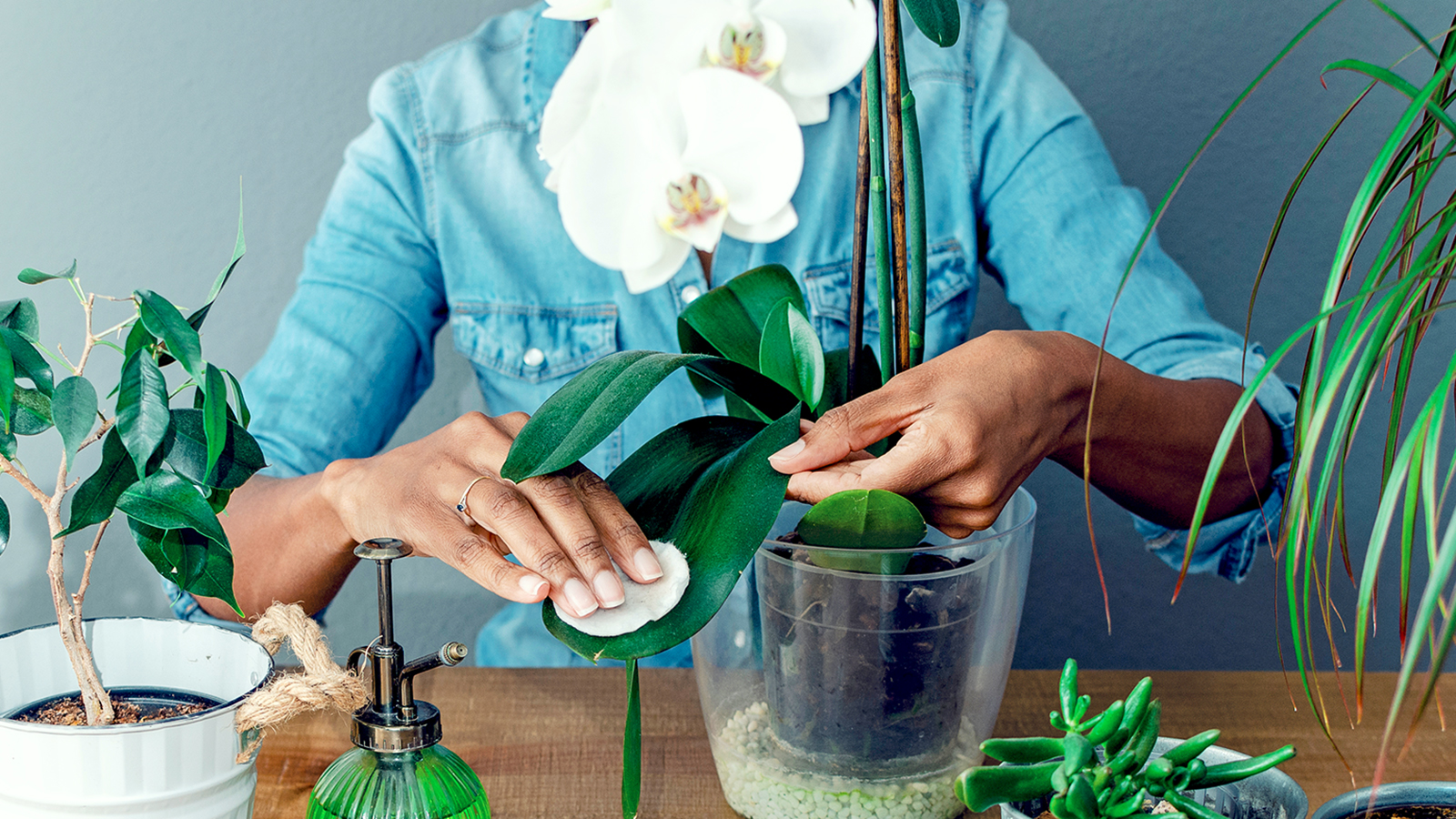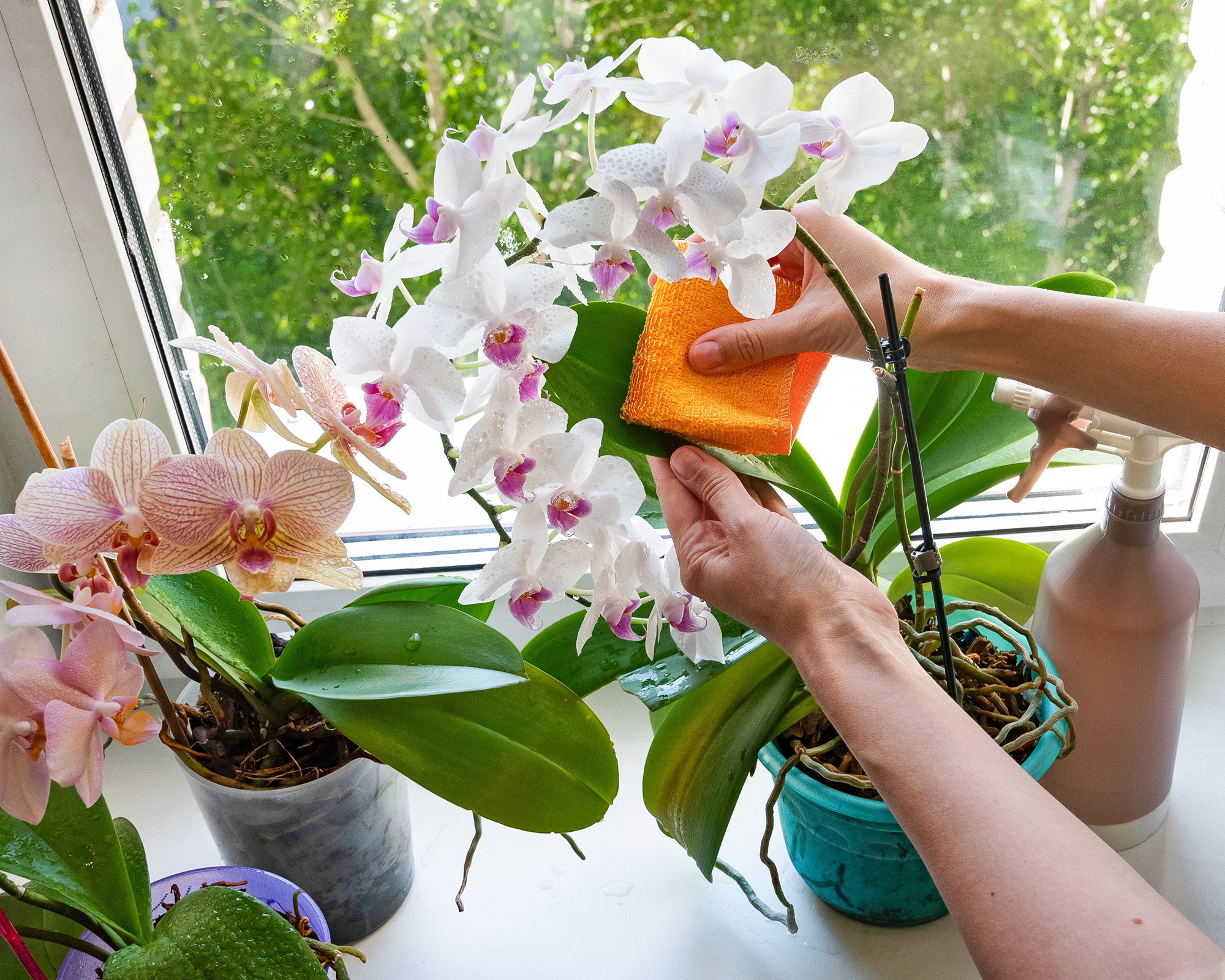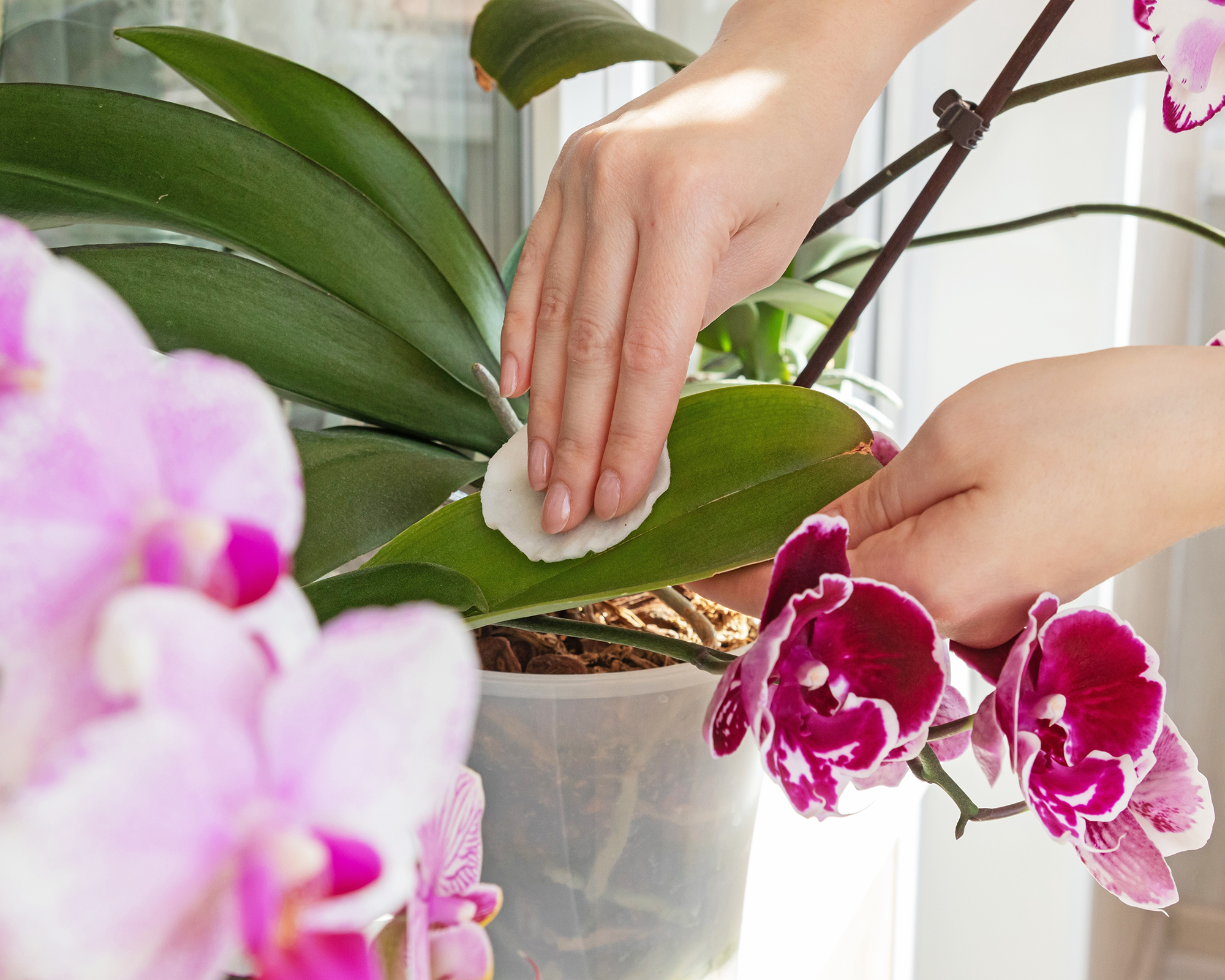How To Clean Orchid Leaves The Right Way – And Make A DIY Shine Spray That Keeps Them Pest-Free
Cleaning orchid leaves not only improves the appearance of plants, it helps protect them against problems. Learn how to do it properly with a homemade spray.


It’s easy to be dazzled by a blooming orchid – but if you want those flowers to last and return year after year, don’t overlook the leaves. If you’ve ever wondered how to clean orchid leaves the right way, you’re not alone. It turns out this small maintenance step is more important than most growers realize.
Orchid leaves act like solar panels, capturing the light your plant needs to thrive. But when dust, grime, or hard water deposits settle on them, your orchid’s health can quickly take a hit. And while internet hacks suggest wiping leaves with everything from milk to mayonnaise, the truth is far more straightforward – and far less messy.
Before you dive into your next cleaning routine, ensure you’re not making common mistakes that can actually do more harm than good. If you’ve been dealing with orchid leaf problems such as wilting, yellowing, or speckled foliage, you might want to check your orchid care regime and consider whether a more serious issue needs to be addressed
Why Clean Orchid Leaves Matter
A little dust might seem harmless, but on orchid leaves, it can block vital sunlight and limit photosynthesis. Even worse, that grime becomes a breeding ground for moisture-loving orchid pests like spider mites, scale, and aphids. In time, your orchid’s growth slows, its immune defenses weaken, and blooms may start to fade prematurely. This is especially true for broad-leaf orchid varieties like Phalaenopsis, which act like dust magnets indoors. By keeping their leaves clean, you not only improve your plant’s health – you also preserve that glossy, just-watered aesthetic that makes orchids so appealing.
How Often Should You Clean Orchid Leaves?
There’s no strict calendar for this task. Orchids in kitchens, near vents, or beside open windows will collect grime faster than those in quieter spots. As a rule of thumb, check every two weeks. If the surface feels gritty or looks dull, it’s time for a refresh. More frequent cleaning may be needed in winter due to heating dust, or in summer when open windows and fans are common. Just avoid overdoing it – too much attention can strip the protective wax layer on the leaves.

Orchid Cleaning Spray Recipe
Make your own orchid cleaning spray by mixing lukewarm distilled water with a drop or two of fragrance-free baby shampoo or castile soap, such as Dr Bronner's castile soap from Amazon. For extra antifungal protection and that all-important shine, add a couple of drops of neem oil to the mix. It's worth getting a bottle of this wonderful vegetable oil, as it can be used on a lot of plants to control pests and fungal issues. Buy neem oil from Amazon.
Combine everything in a spray bottle, shake gently, and spray it onto a microfiber cloth – not directly onto the plant. The cloth should be damp, not soaked, to avoid over-wetting the foliage.
Sign up for the Gardening Know How newsletter today and receive a free copy of our e-book "How to Grow Delicious Tomatoes".
How to Clean Orchid Leaves
Support the leaf gently with one hand and wipe from base to tip with the other. Be thorough but gentle to avoid bending or snapping the leaf. Turn it over and repeat on the underside, where pests and eggs like to hide. Use a cotton swab dipped in the same solution to clean crevices around the crown and stem bases.
While cleaning your orchid, take the opportunity to inspect foliage for sticky residue, black spots, or webbing – early signs of orchid pests or fungal problems.
Don’t Fall for These Orchid Cleaning Myths
It’s tempting to try home remedies, but many of them are outdated or outright harmful. Never use mayonnaise, milk, or coconut oil – they clog pores and trap moisture. Avoid alcohol-based products that can burn delicate tissue, and steer clear of bleach or harsh detergents. Don’t let water pool in the crown or stem bases, where it can lead to crown rot or root rot. Always wipe, never drench, and let the leaves dry fully before returning your orchid to its spot.

Should You Use a Commercial Leaf Shiner?
Short answer: skip it. Leaf shiners are formulated for temporary cosmetic use and often seal leaf pores, hindering respiration. They may offer artificial gloss, but that shine can come at the cost of long-term health. A naturally clean leaf has its own healthy luster – you don’t need to fake it.
If you are still tempted to try, use one that's designed not to block leaf pores, such as Miracle-Gro Leaf Shine from Amazon.
Learning how to clean orchid leaves is about more than vanity. It’s a simple habit that minimizes orchid problems, encourages healthier growth, more frequent blooms, and fewer pest problems. Once you have the right ingredients and make it part of your routine, it becomes second nature.

Tyler’s passion began with indoor gardening and deepened as he studied plant-fungi interactions in controlled settings. With a microbiology background focused on fungi, he’s spent over a decade solving tough and intricate gardening problems. After spinal injuries and brain surgery, Tyler’s approach to gardening changed. It became less about the hobby and more about recovery and adapting to physical limits. His growing success shows that disability doesn’t have to stop you from your goals.